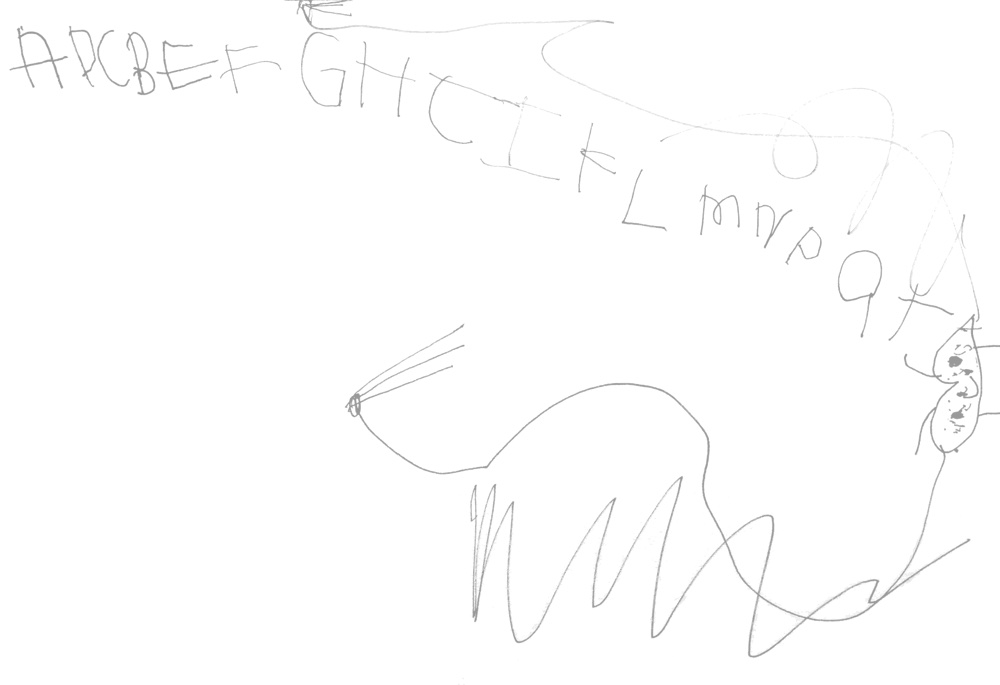
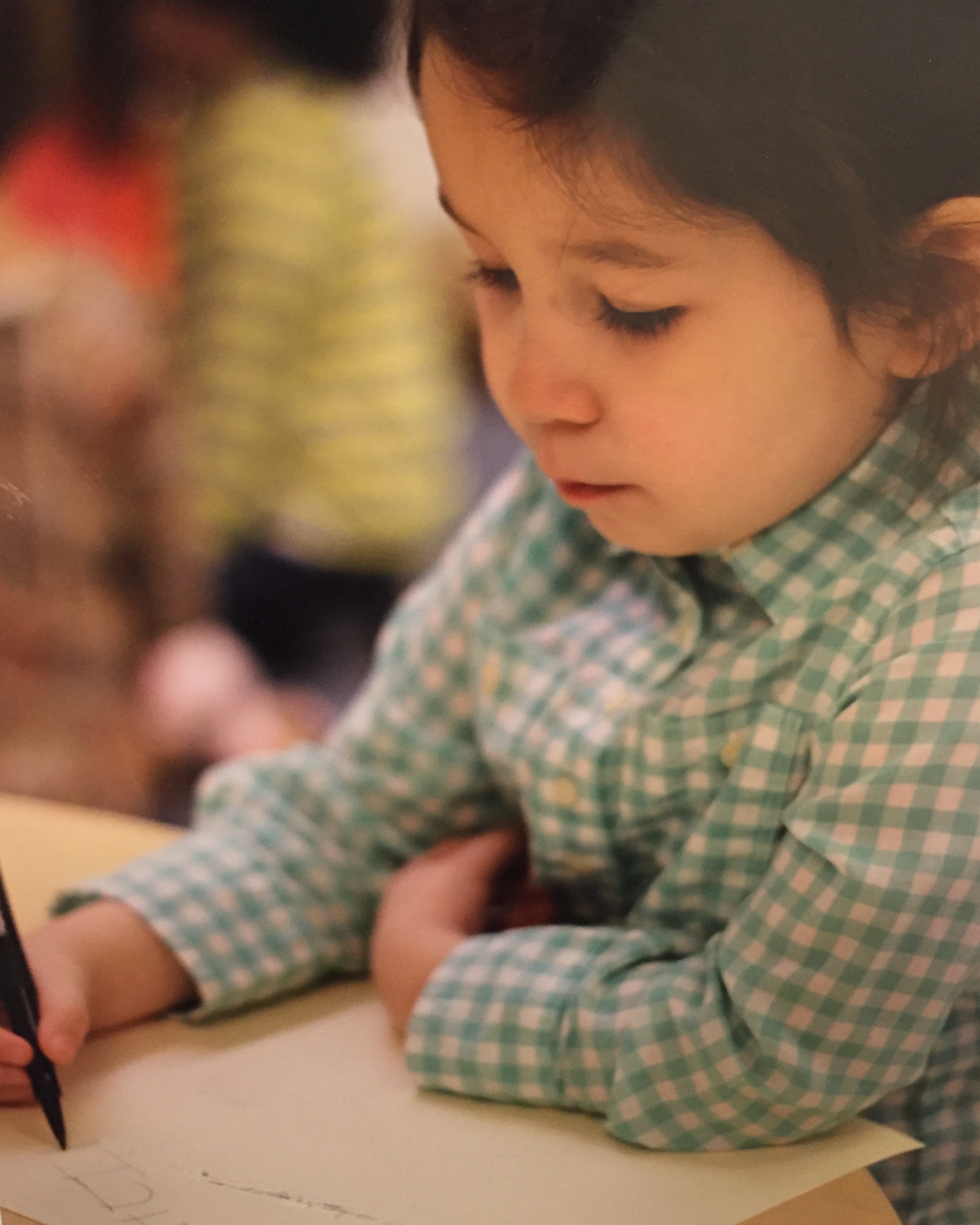 If children are provided with marking tools, a suitable surface on which to apply them, and a safe place to play, they begin to make marks at quite an early age (Schickedanz, 1999).
If children are provided with marking tools, a suitable surface on which to apply them, and a safe place to play, they begin to make marks at quite an early age (Schickedanz, 1999).
The PM Young 3's are making meaningful marks through the use of paper, crayons, pencils, and scissors. We believe these basic materials provide the children with a sense of autonomy. The children not only have the ability to independently choose the materials for themselves - they are able to sit and focus their attention to this circumscribed activity with diligence. Biber describes that drawing has a place a position, a posture, and the materials used for it are not toys, but expressive tools for the child. The child is developing a gradual but persistent interest in getting a symbolic value out of what she does witht the tools (Biber, 1967).
As we carefully observe the children's drawings, we see the developmental stages of drawing and writing. These include random and controlled scribbling repetitive lines of patterns, and the pre-schematic stage of drawing. We respect and give value to this developmental, yet meaningful process because learning to write is a journey.
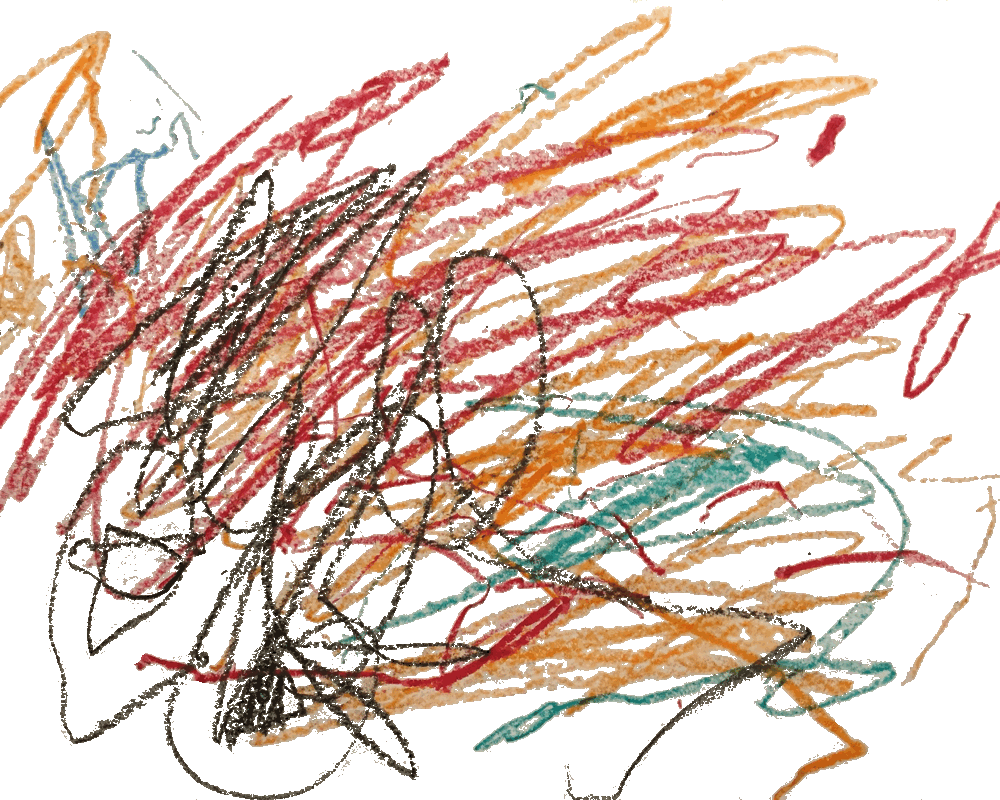 Scribbling seems to be its own reward... it furnishes an unparalleled opportunity for learning the relations between finger movements that guide the tool and the resulting visual feedback (Gibson, 1975). Scribblings are the child's first marks!
Scribbling seems to be its own reward... it furnishes an unparalleled opportunity for learning the relations between finger movements that guide the tool and the resulting visual feedback (Gibson, 1975). Scribblings are the child's first marks!
At these stages of drawing and or writing development - the child scribbles with the intent to write, while having the visual ability to discriminate between writing and drawing. The scribbles are usually made from left to right and can be linear, circular, horizontal, or vertical as you see in the children's work on the documentation board. The marks become more deliberate The child believes her drawing has a "message."
At this stage young children use and notice the consistent lines, dots, and curves in their artwork and writing. Their drawing and writing contain fewer scribbles. They also understand that writing is linear at this stage.
We have observed a few of the children who are beginning to use repetitive lines and patterns in their drawings However, not consistently - which means we need to further observe.
At this stage young children's drawing are simple human-like figures. There is usually a circular head containing two eyes inside, sometimes a mouth which looks like a line, and often multiple lines surrounding the outside of the circular head. Young children will often label the drawing as "this is me" or "This is my mommy" or This is my daddy."
On the documentation board, you can clearly see one drawing with an attempt or the child is in the process of producing a human-like figure. Beside or next to it there is a progression, where the child has accomplished or completed task.
Representational drawing, which is inclusive to the pre-schematic stage of artistic development, is a continuation of mark making (Lowenfeld). Children at this stage of drawing development are searching for representational schema and often create their own symbols to communicate visually. Once children master certain marks, they can combine shapes to form symbols. These "me" drawings communicate meaning through representations of visual objects important to the child's life (Arnheim). Chorlotte said, "This are the people in my family. Tis is my daddy, mommy, my brother Adrian, and me." Alistair said, "This is my family. This is daddy, momm, me and Julius! And I am also making the number eight!"
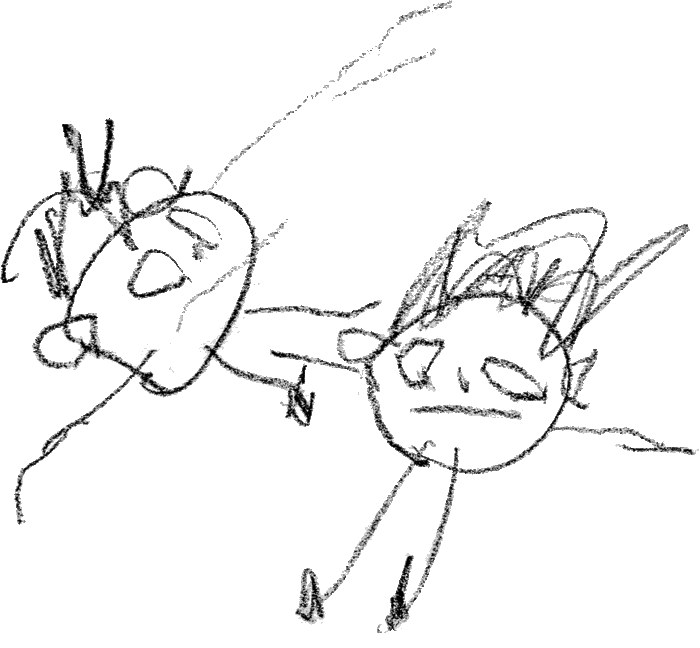 Through our observation of the children's natural progression, we are beginning to notice fewer random and controlled scribblings within their work. We see the spontaneous transition from making scribbles to drawing pictures. In other words, the children are developing a graphic language through drawing, i.e., art that says something (Beaty & Pratt). We have also observed that the children have become organically interested in producing patterns and repetitive lines, practicing and writing the first letter of their name, and writing their names.
Through our observation of the children's natural progression, we are beginning to notice fewer random and controlled scribblings within their work. We see the spontaneous transition from making scribbles to drawing pictures. In other words, the children are developing a graphic language through drawing, i.e., art that says something (Beaty & Pratt). We have also observed that the children have become organically interested in producing patterns and repetitive lines, practicing and writing the first letter of their name, and writing their names.
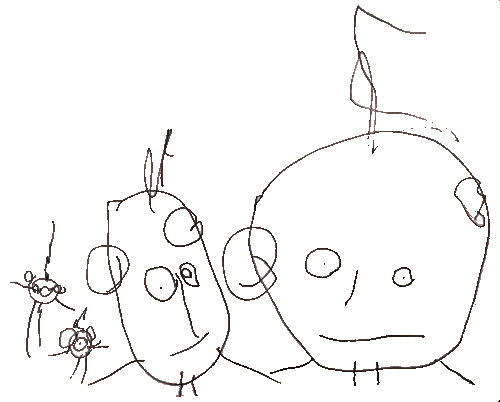 To deepen the children's understanding and to diversify their experiences with mark making tools, we've provided opportunity for exploration at the light-table. The children were eager to try this new experience, although the writing/drawing tools and light-table are familiar to them. The children worked with concentration and focus, while noticing the transparency of their work when the paper was turned over on the reverse side. We ponder what the children are thinking about when making thisobservation, which means we need to further observe and research their work.
To deepen the children's understanding and to diversify their experiences with mark making tools, we've provided opportunity for exploration at the light-table. The children were eager to try this new experience, although the writing/drawing tools and light-table are familiar to them. The children worked with concentration and focus, while noticing the transparency of their work when the paper was turned over on the reverse side. We ponder what the children are thinking about when making thisobservation, which means we need to further observe and research their work.
During this stage of writing development children are attempting to use letters. It is most common to see children experiment with letters in their name because these are the letters they know best They also make mock letters using familiar shapes, assuming their mock letters must be real letters (Robertson, 2007)
Alistair has been working on the letter "S" in his name for the past three months. It appears he has gained some mastery of it as he attempts to help Siena make the letter "S" in her mock letter drawing. Alistair struggles to find space to write the "S" on Siena's paper, but then decides on a small space in between the lines and circles, which is a little hard to see.
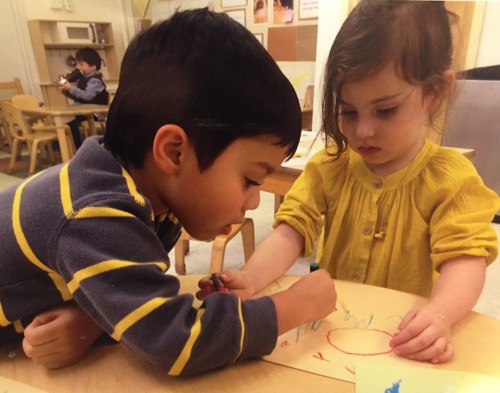
Siena: "I want to make the letter "S" for my name."
Alistair: "I have the letter "S" in my name! I know how to make an "S"."
Siena: "Can you make an "S" for me? It's for my name."
Alistair: "Sure. I know how to do it!"
While this stage is similar to the previous, this is often the child's first attempt to write without using a model. Children's names are typically their favorite thing to write and the word they have the most exposure to (Robertson, 2007)
Alistair excitedly spells his name to teachers and seems to be proud of his accomplishment! He has been working through this process for the past three months. We have observed some mastery and recognizable letter formation in his name over the past month.
Alistair: "I know how to spell my name!"
Olympia: "Can you tell me how you spell your name?"
Alistair: "A-L-I-S-T-A-I-R. I could also write my name."
Olympia: "Can you show me?"
Alistair: "Sure!"
This is an example of how documentation threads sometimes interweave. While there was a completely different interest in music and communicating through musical expression, there was a point when making marks and making sound effects culminated in the work of what we called "Sound Pictures." After seeing a child draw in class while making sound effects, we decided the drawing itself was not the entirety of what the child was trying to create. In response to this child's work, we decided to simultaneously record the drawing and the sound he created so it would reflect his true intentions.
by Alistair PMY3s
"The cars are making the sounds." -Alistair